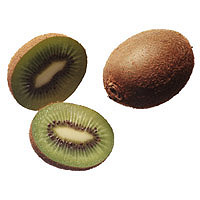Gluten Free
What does following a gluten-free diet mean? That you're embarking on an easy diet with a wide range of health-promoting effects. Instead of dwelling on what you’re giving up, consider that you’re going to enjoy a whole new world of delicious food options to meet your special dietary needs. You’ll be eating seasonally, choosing more fresh fruits and vegetables, focusing on meats, seafood, poultry, legumes, lentils, corn, and rice, and discovering fascinating ancient grains such as quinoa, amaranth, and millet. You’ll be able to eat potatoes, eggs, most cheeses, even chocolate (!)—and enjoy them without guilt because you’ll be taking good care of your body. In fact, you’ll probably end up eating—and feeling—better than ever!
Visit this page for more information about living Gluten Free
---
We carry a large variety of gluten free items, the brands listed below represent just some of the offerings we carry















More Diets
Kiwi

Best to Buy
Choose semifirm, unblemished fruit with uniform skin. Kiwis sweeten with age but should be eaten before they become mushy; they will ferment if left too long. Refrigerate when soft.
Prep & Store
Simply remove the fuzzy peel and eat. Slice the fruit to make beautiful garnishes on cakes, cocktails, cheese plates, or breakfast cereals.
Quick & Easy Recipe
For a vitamin C–packed treat, cut kiwi into chunks, mix with berries and other favorite fruit. Let sit for an hour to blend juices, stir, and serve.
Nutrition Notes
Kiwis are an excellent source of vitamin C.
Copyright © 2025 TraceGains, Inc. All rights reserved.
Learn more about TraceGains, the company.
The information presented in the Food Guide is for informational purposes only and was created by a team of US–registered dietitians and food experts. Consult your doctor, practitioner, and/or pharmacist for any health problem and before using any supplements, making dietary changes, or before making any changes in prescribed medications. Information expires December 2025.











